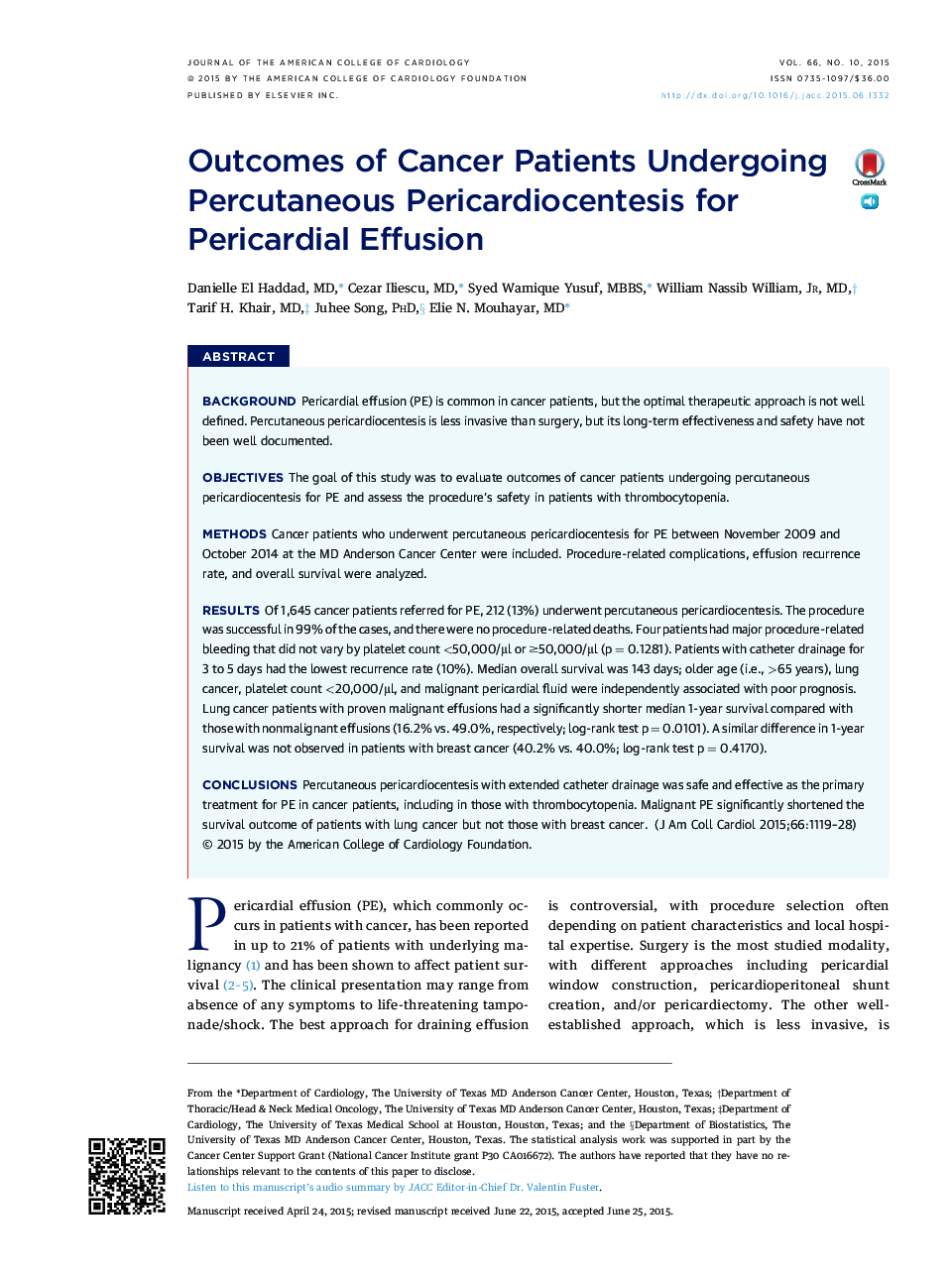| کد مقاله | کد نشریه | سال انتشار | مقاله انگلیسی | نسخه تمام متن |
|---|---|---|---|---|
| 2943139 | 1577032 | 2015 | 10 صفحه PDF | دانلود رایگان |

BackgroundPericardial effusion (PE) is common in cancer patients, but the optimal therapeutic approach is not well defined. Percutaneous pericardiocentesis is less invasive than surgery, but its long-term effectiveness and safety have not been well documented.ObjectivesThe goal of this study was to evaluate outcomes of cancer patients undergoing percutaneous pericardiocentesis for PE and assess the procedure’s safety in patients with thrombocytopenia.MethodsCancer patients who underwent percutaneous pericardiocentesis for PE between November 2009 and October 2014 at the MD Anderson Cancer Center were included. Procedure-related complications, effusion recurrence rate, and overall survival were analyzed.ResultsOf 1,645 cancer patients referred for PE, 212 (13%) underwent percutaneous pericardiocentesis. The procedure was successful in 99% of the cases, and there were no procedure-related deaths. Four patients had major procedure-related bleeding that did not vary by platelet count <50,000/μl or ≥50,000/μl (p = 0.1281). Patients with catheter drainage for 3 to 5 days had the lowest recurrence rate (10%). Median overall survival was 143 days; older age (i.e., >65 years), lung cancer, platelet count <20,000/μl, and malignant pericardial fluid were independently associated with poor prognosis. Lung cancer patients with proven malignant effusions had a significantly shorter median 1-year survival compared with those with nonmalignant effusions (16.2% vs. 49.0%, respectively; log-rank test p = 0.0101). A similar difference in 1-year survival was not observed in patients with breast cancer (40.2% vs. 40.0%; log-rank test p = 0.4170).ConclusionsPercutaneous pericardiocentesis with extended catheter drainage was safe and effective as the primary treatment for PE in cancer patients, including in those with thrombocytopenia. Malignant PE significantly shortened the survival outcome of patients with lung cancer but not those with breast cancer.
Journal: Journal of the American College of Cardiology - Volume 66, Issue 10, 8 September 2015, Pages 1119–1128